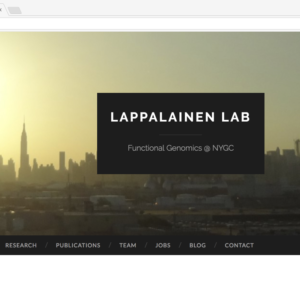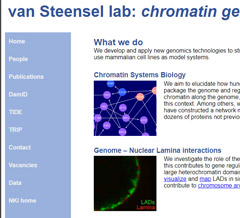Collaborators
Tuuli Lappalainen
New York Genome Center
We are starting a new collaboration with the Lappalainen lab that was made possible by a pilot grant from the Vagelos Precision Medicine Initiative at Columbia University.
Richard Mann
Columbia University Medical Center
With the Mann lab, we have pioneered the SELEX-seq approach, a combination of experimental and computational methods that allows us to perform in vitro profiling of protein-DNA interactions at unprecedented resolution (Slattery et al., Cell, 2011; Abe et al., Cell, 2015). Recently, we developed EpiSELEX-seq, which allows us to directly quantify the effect of cytosine methylation on protein-DNA interaction. This allowed us to discover that binding of many transcription factors, including p53 tetrameters and Hox-cofactor complexes can be modulated by DNA modification (Kribelbauer et al., Cell Report 2017). Our collaboration is funded by National Human Genome Research Institute.
Coleen Murphy
Princeton University
The Murphy lab at Princeton University studies the genetic and molecular mechanisms underlying longevity and variation in life span. Our collaboration started with our computational discovery that PQM-1 is a major functional antagonist of the well-known FOXO/DAF-16 transcription factor and responsible for about half of the life span extension seen in long-lived mutant worms (Tepper et al., Cell, 2013). We are currently following up on these findings in a project funded by the National Institute on Aging.
Miles Pufall
The University of Iowa
The collaboration with the Pufall lab got started at Cold Spring Harbor during the summer course on Statistical Methods for Functional Genomics, which our lab has been co-organizing and teaching for a decade now. We recently published a paper showing that minor groove readout underlies a difference in DNA binding specificity between two steroid hormone receptors that play important roles in cancer (Zhang et al., 2018). Ongoing work focuses in Cas9 specificity (bioRxiv, 2017).
Remo Rohs
University of Southern California
The Rohs lab at USC investigates the role of variation in DNA shape in protein-DNA binding specificity. Our collaboration started with the discovery of “latent specificity” of Hox proteins (Slattery et al., Cell, 2011) and of the striking sequence and methylation sensitivity of DNase I when cleaving naked DNA, both of which can be explained in terms of DNA shape readout. Most recently, we have created a general resource for analyzing the effect of cytosine methylation on DNA shape and Hox protein binding (Rao et al., 2018). Our collaboration is funded by National Human Genome Research Institute.
Bas van Steensel
Netherlands Cancer Institute
Our collaboration with the Van Steensel lab goes back more than 15 years. Together, we have pioneered the role of “hotspots” of transcription factor binding also known as “HOT” regions (Moorman et al., PNAS, 2006); the partitioning of chromatin into different types or “colors” (Filion et al., Cell, 2010), and most recently the use of massively parallel reporter assays in human cells (Van Arensbergen, Nature Biotechnology, 2017).





